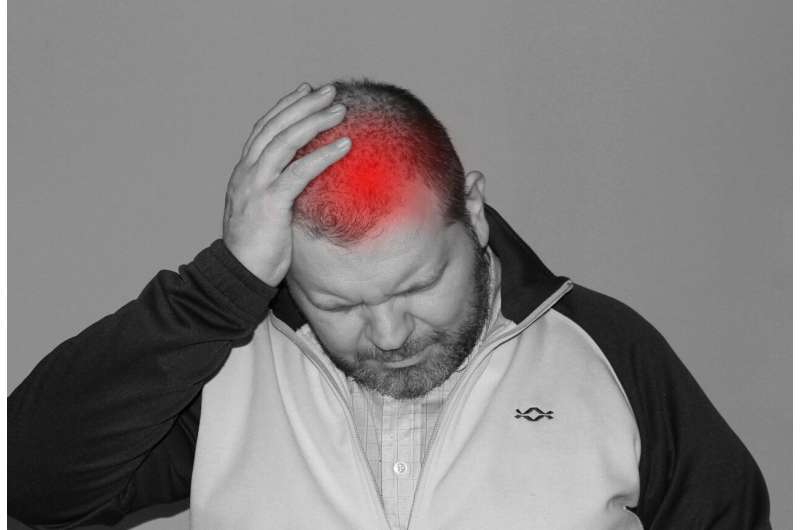Credit: Pixabay/CC0 Public Domain
Patients who undergo surgery for carpal tunnel syndrome and other upper extremity nerve compression syndromes are more likely to have a diagnosis of migraine headaches, reports a study in the December issue of Plastic and Reconstructive Surgery.
The findings add to previous evidence of a possible "shared predisposition" between migraine and upper extremity nerve compression syndromes, according to the report by ASPS Member Surgeon Kyle R. Eberlin, MD, Lisa Gfrerer, MD, Ph.D., and colleagues of Massachusetts General Hospital, Harvard Medical School.
Some types of nerve decompression surgery linked to higher migraine rates
The researchers analyzed data on nearly 9,600 patients who underwent nerve decompression surgery of the upper extremity (arm, wrist, and hand) between 2009 and 2019, drawn from a large hospital database. The most common procedure was median nerve decompression (71 percent of patients), typically performed in patients with carpal tunnel syndrome.
The patients were screened for a diagnosis of migraine headache. A diagnosis of migraine was more likely for patients undergoing two types of upper extremity nerve decompression procedures: median nerve decompression and multiple nerve decompressions. Overall, 7 percent of patients with median nerve decompression and 8.8 percent of those undergoing multiple nerve decompressions were diagnosed with migraine.
After adjustment for other risk factors, the odds of migraine diagnosis were 30 percent higher for patients undergoing median nerve decompression and 70 percent higher for those undergoing multiple nerve decompression (compared to ulnar nerve decompression in the elbow).
Patients with migraine diagnosis should consider nerve compression treatment options
In recent years, plastic surgeons have developed migraine surgery techniques to relieve nerve compression sites or "trigger points" associated with migraine attacks. Patients who are suffering from extremity nerve compression such as carpal tunnel syndrome and have a diagnosis of migraine should therefore consider nerve compression as a potential treatment option, the researchers believe.
Adding to previous studies, the report "provides further evidence of a connection between upper extremity nerve compression and migraine," Dr. Eberlin and colleagues write. The reported associations suggest that patients who develop symptoms related to nerve compression in the arm and hand might also be predisposed to nerve compression at migraine-related trigger points.
Although it's unclear how many patients diagnosed with migraine also have nerve compression syndromes, "a biologic and genetic overlap between CTS and migraines is probable," Dr. Eberlin and co-authors conclude. They call for further studies of shared mechanisms that might explain the link between the two different types of nerve impingement syndromes.
Meanwhile, the researchers write, "It is important for hand and peripheral nerve surgeons to recognize migraine as a comorbidity in patients with nerve impingement syndromes and provide comprehensive screening for both disorders."
More information: Lisa Gfrerer et al, Migraine Headaches in Patients with Upper Extremity Compressive Neuropathy, Plastic & Reconstructive Surgery (2022). DOI: 10.1097/PRS.0000000000009684
Journal information: Plastic and Reconstructive Surgery
Provided by Wolters Kluwer Health























